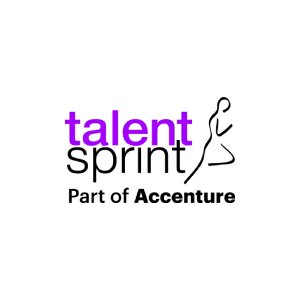Sustainable Development: How Engineering and Smart Cities are Leading the Way

The world is steadily moving towards building a sustainable future, looking for more creative ways through engineering innovations and the emergence of smart cities. To improve our planet's sustainability and create a balanced future where social progress, environmental preservation, and economic growth coexist peacefully, we need to find measures for sustainable development.
The latest statistics by some significant corporations shows that,
“75% organisations have increased their sustainability investments over the past year” - Deloitte.
“Growth in demand for 'Green Skills' rose to 12.3% between 2022 and 2023 across the 48 countries” - LinkedIn
This shows how this global movement is reshaping industries, influencing consumer behaviour, and driving innovation in ways that are both inspiring and essential for our shared future
What is meant by sustainable development?
Sustainable development means sustaining current resources and also working for their growth and preservation for future generations. It entails striking an equilibrium between the need to consume resources now and the need to save them for later.
Recently, at The inaugural meeting of the SDG Stimulus Leaders Group, The prime minister of Canada, “Justin Trudeau, gave a statement that,
“The Sustainable Development Goals are crucial to growing our communities, building a better future and keeping the air clean,” said Mr. Trudeau. “
Let’s keep working together to make life fairer, more sustainable and more prosperous for everyone.”
The Growing Need for Sustainable Solutions in Urban areas
Due to the fast-paced urbanisation happening worldwide, urban areas face increased demand for sustainable solutions. With an increasing number of individuals moving to urban areas for improved lifestyles, cities are growing at a faster rate, leading to various difficulties like overcrowding, resource scarcity, waste problems, and environmental harm.
The importance and Need for sustainable solutions:
Efficient use of energy
Cities need to implement more energy-efficient technologies and practices to reduce carbon emissions in their surroundings. This involves upholding renewable energy sources, Making public transportation more viable, and upgrading buildings to increase energy efficiency.
Urban planning that focuses on long-term viability and resource efficiency
Urban planning needs to include green areas, eco-friendly housing, and effective transportation systems. Smart cities are coming into existence as a resolution, employing technology to effectively handle resources and enhance the quality of life in city regions.
Conserving water is important
Effective water management practices are crucial in urban settings to guarantee a consistent provision of fresh water. This involves collecting rainwater, reusing wastewater, and decreasing water waste with better infrastructure.
Recycling and waste minimization
Building improved waste management systems that emphasize minimizing, recycling, and mulching can help cities manage waste more sustainably by lessening the strain on landfills and the environment.
These instances show how sustainable development strategies are being used by cities all around the world to solve the problems caused by urbanization, enhance the standard of living for locals, and save the environment for coming generations.
Here‘s an example of a city with sustainable solutions:
Songdo, A city in South Korea
- Songdo is a sustainable smart city near Seoul. It was constructed by leveling up the ground where it is situated, making it the perfect example of a smart city.
- To promote sustainability in that city, there has been made a lot of improvements in the Infrastructure: Songdo uses a under the ground waste bestowal system that uses fumy tubes to relocate trash to refining centers automatically, reducing emissions from waste collection.
- The Buildings in the city cling on to the leadership in Energy and Environmental Design (LEED) standards, which guarantees high energy efficiency and minimal impact on the ecosystem.
Role of engineering
As we all know, the world is advancing at a very fast pace, and engineers have helped in the growth and development of the globe. Therefore, engineers also play a very critical role in forming sustainable ideas for not only the development but also the preservation of the natural environment.
Let’s take a look:
Creating infrastructure that is environmentally friendly and has long-term viability
Engineers have created energy-saver models which reduce the carbon footprints by making use of the sustainable materials, intelligent technologies, and renewable energy sources. Green buildings commonly include elements such as solar panels, systems for collecting rainwater, and natural ventilation, all of which help with sustainability.
Engineers have built transportation systems like electric vehicles, high-speed rail, and bike-sharing programs to reduce environmental impact. They also plan and create infrastructure such as bridges, roads, and tunnels that are durable and use resources efficiently.
More use of renewable energy
The engineers have bought the world of innovation in the forefront by introducing us to the renewable energy techniques like solar panels and wind turbines.
Development of Smart Cities
Engineers are really at the heart of planning and designing smart cities. They're the ones making sure that our cities aren't just high-tech but also sustainable. They come up with systems that make the best use of energy, cut down on traffic jams, manage waste in smarter ways, and ensure everyone has access to clean water and air.
There are many examples in the industry about the companies who have adopted the sustainable model of engineering,
Such as,
IKEA:
- Ikea has pledged to use only recycled and renewable resources by 2030. The company has also made investments in renewable energy, hoping to use solar and wind power plants to generate more energy than it uses.
- It has implemented a range of sustainable practices across its global operations, from sourcing materials to energy use.
Emergence of smart cities, leading to sustainable Development
The emergence of smart cities has really changed the way of the world in the sense of sustainable development.
Just give it a thought that we know how fast our cities are growing, but, with that growth, there comes a lot of challenges, such as:
- Energy consumption
- Waste management
- Transportation, etc
Smart cities have stepped in as a solution, using technology to make urban living not just more well-ordered but also more sustainable. The technical aspects such as:
- Data Analytics
- Smart grids
These cities can monitor and manage resources in real-time. This means they’re using energy more wisely, cutting down on waste, and maintaining water and air quality.
It’s all about making the most of what we have without putting extra strain on our environment.
But smart cities are also creating spaces that improve our quality of life.
- They promote greener public spaces
- Reduce traffic congestion with smart transportation systems
- Make our buildings more energy-efficient
Therefore, the rise of smart cities is paving the way for a future where urbanization and sustainability go hand in hand, showing us that we can grow and thrive without compromising the planet.
Innovations on the Horizon
As we look toward the future, it's clear that the innovations on the horizon hold incredible potential to drive sustainable development forward. Whether it’s breakthroughs in renewable energy or the rise of smarter cities that prioritize sustainability, these advancements are essential for tackling the big challenges we're facing today. But here’s the thing—it’s not just about the technology; it’s really about the people who will be leading these changes.
If you’re someone who wants to make a real difference—both in your career and personally—understanding sustainable development is key. Taking a course in this field can give you the knowledge and skills you need to truly contribute to this global effort. It’s not just about learning the theories; it’s about gaining practical tools to solve real-world problems.
On the professional side, it sets you up as a leader in a field that’s becoming more critical across every sector. And on a personal level, it deepens your understanding of how what we do today will shape the world we live in tomorrow. By embracing this knowledge, we can all play a part in creating a future that’s not just more sustainable, but also more fair and resilient.
The PG Level Advanced Certification Programme in Sustainable Engineering and Smart Cities offered by CCE at IISc can help you delve deeper into sustainable engineering and equip individuals with essential knowledge and capabilities crucial for sustainable development. To know more about the program and its benefits both personally and professionally, you can click here to learn more.
The need for creative measures and collaborations to achieve the goals
Achieving the goals of sustainable development isn’t something we can do alone—it’s going to take some serious creativity and collaboration. We’re facing complex challenges like climate change, resource depletion, and social inequality, and to solve them, we need to come with solutions which outside the box. It’s about bringing together different minds, such as engineers, policymakers, businesses, and communities to come up with innovative solutions that work for everyone.
- Let’s take an example, In 2023, global investments in renewable energy hit a record $500 billion, according to BloombergNEF. This is a direct result of governments generating funds for the green energy projects, businesses advancing in technology, and communities being told to adopt cleaner alternatives.
- Also, UN reports have shown that to meet the 2030 Sustainable Development Goals (SDGs), an annual investment of around $5 to $7 trillion is needed across the globe. That is a huge number in itself, and no single entity can do that alone.
So, We can do whatever we can in our capacity like using renewable energy, thinking of waste as a resource, and designing smart and green cities. But, to really make a difference, we need to come together, share ideas, and collaborate toward a common goal. Only then can we truly build a sustainable future that benefits us all.

TalentSprint
TalentSprint is a leading deep-tech education company. It partners with esteemed academic institutions and global corporations to offer advanced learning programs in deep-tech, management, and emerging technologies. Known for its high-impact programs co-created with think tanks and experts, TalentSprint blends academic expertise with practical industry experience.



